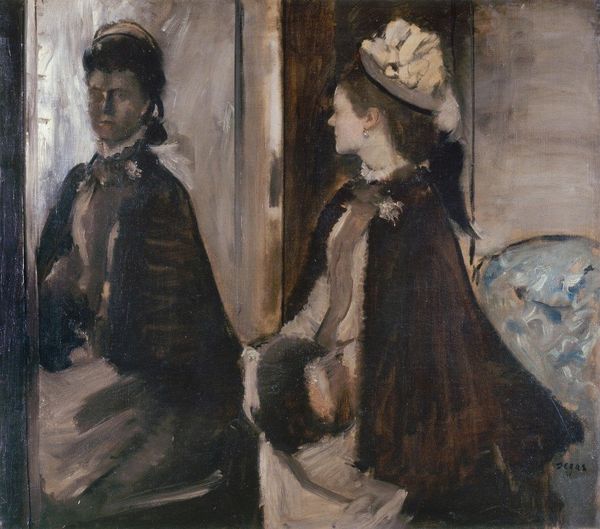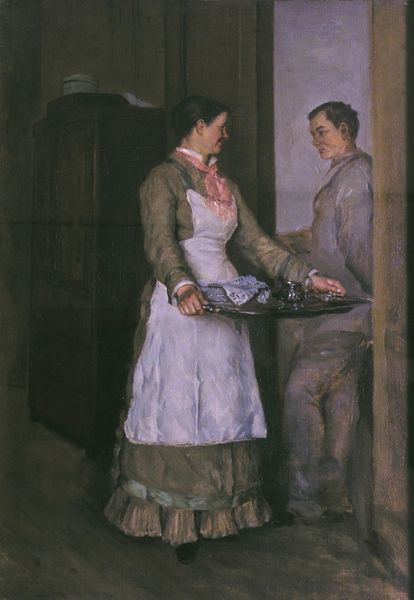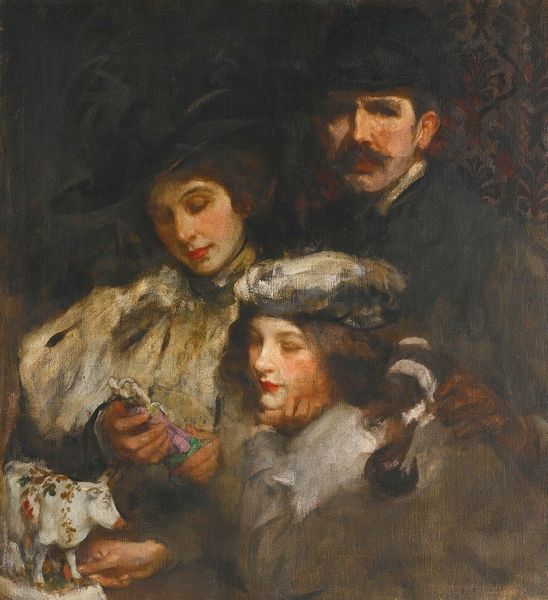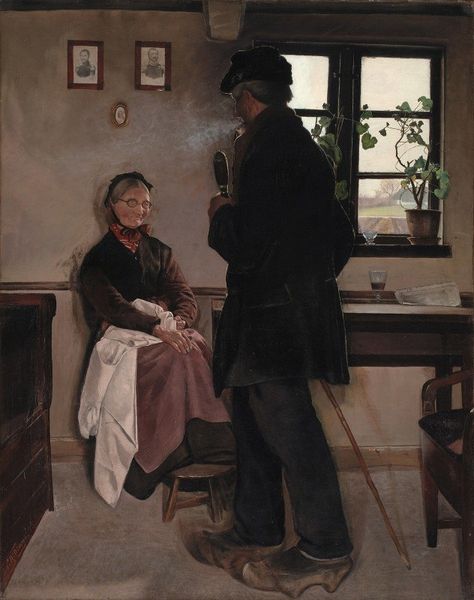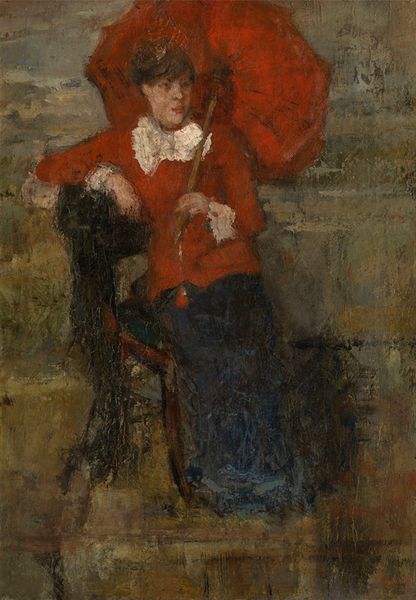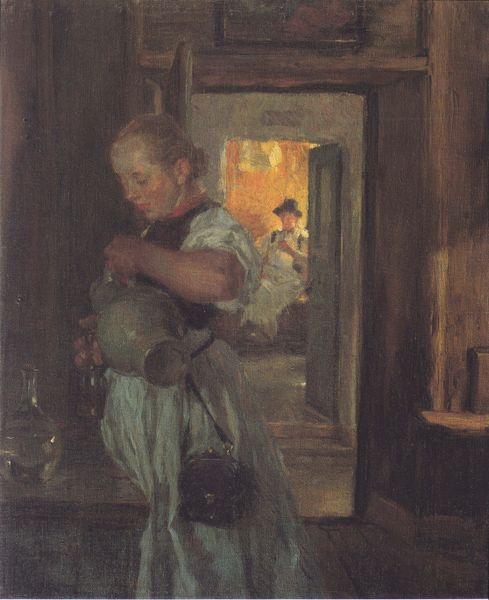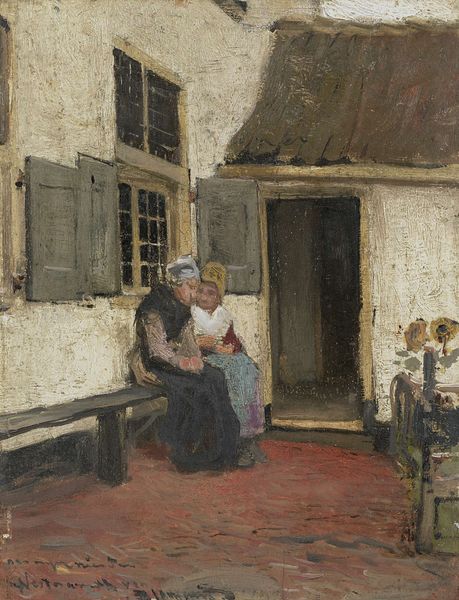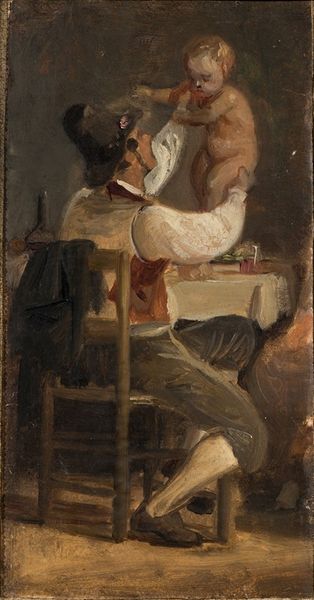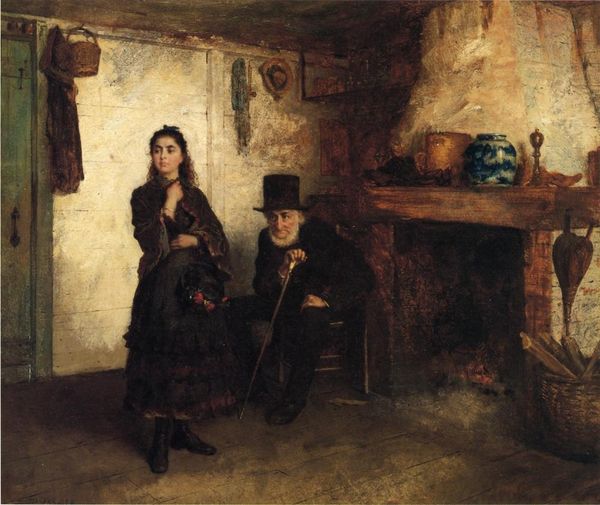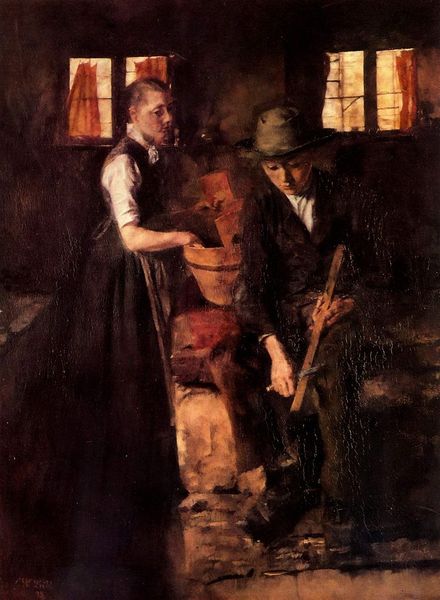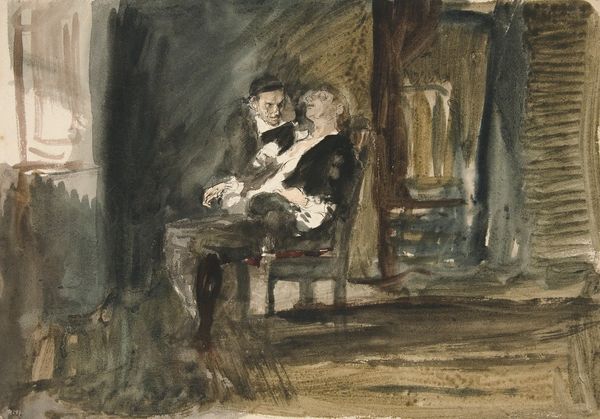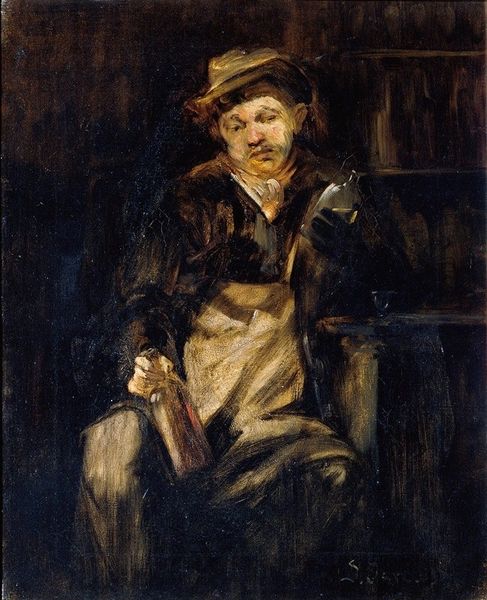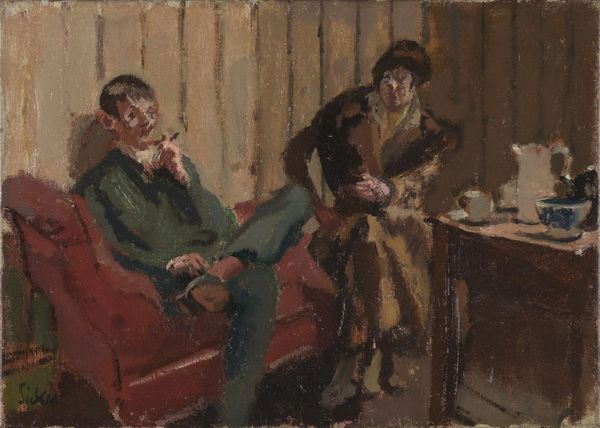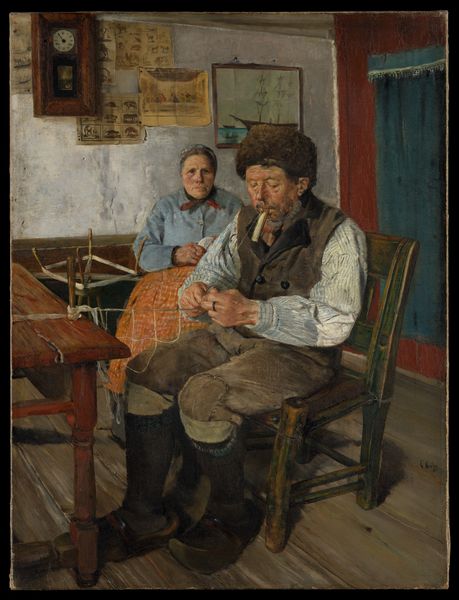
Dimensions: 75.5 x 61.5 cm
Copyright: Public Domain
Curator: Let’s examine Wilhelm Leibl’s “Elderly Farmer and Young Girl,” also known as "The Unequal Couple," painted around 1876 or 1877 and housed at the Städel Museum. It's an oil-on-canvas work showing a striking pair. My first thought is of constraint; it has a sort of uneasy intimacy, wouldn't you agree? Editor: Absolutely. It's difficult to ignore the visual narrative unfolding, primarily expressed through attire, suggesting the constraints of both rural labor and socio-economic expectations of the era. Curator: Precisely. Take a look at the craftsmanship in depicting the girl’s folk dress. The detail on the fabric—the stitching, the layering—speaks to the labor involved in creating such garments. It also illustrates a regional identity crafted from specific materials and manufacturing techniques, indicating trade and community economies of scale at the time. Editor: And observe the clear symbolic divide represented here. On one hand, the young woman wears dark garb, a cap that appears nearly funerary; her wedding band shines, too, in the dark of it all. There's an association of darkness to her that makes me think about oppression. The elderly man looks almost indecent in juxtaposition; the ruddy, naked vulnerability of his throat. Curator: And in terms of materiality, Leibl’s decision to use oil paint—known for its ability to capture textures and light—allows him to meticulously render the coarse texture of the man's weathered skin against the smoothness of the girl's attire. How would such decisions regarding painting process have influenced, do you imagine, perceptions of social status at the time? Editor: The decision emphasizes the material disparity. Leibl, by focusing on the starkness between youth and old age through color symbolism, perhaps critiqued societal structures pushing unions motivated by survival over love. The liquid in his glass seems also a clear, bold and potent signal as such! It seems clear what sustains such an unequal union. Curator: Well, whatever the interpretation, Leibl certainly created a provocative depiction through his attention to the materials and process. He's highlighted the material labor of the dress, even the production processes to the clear liquor at hand, revealing, for me, a compelling tension. Editor: I couldn't agree more; the artwork provides ample fodder for our historical curiosity—a clear window into unspoken assumptions and repressed anxieties of the time, told powerfully through a unique blend of symbology.
Comments
Join the conversation
Join millions of artists and users on Artera today and experience the ultimate creative platform.
